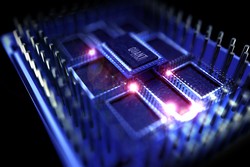Advances in quantum computing
Quantum computing can become highly efficient once photonic technology is perfected. The EU-funded PHOCLUDI (Photonic Cluster States from Diamond) project worked on creating a new diamond-based single-photon source that can release strings of entangled photons. It sought to overcome limitations of measurement-based quantum computing by achieving scalable multi-photon quantum information processing. To achieve its aims, the project team articulated new theories for cluster state generation from diamond defect centres. It worked on achieving high-efficiency coupling of light from diamond defect centres and spin-qubit control for diamond-based single photon sources. PHOCLUDI also worked on obtaining one-dimensional strings of highly-entangled photons that enable arbitrary one-qubit operations. It then studied the implementation of diamond-based quantum light sources for use in photonic quantum information technologies. Among its more notable results, the project team achieved photon detection efficiencies of up to 88 % using new superconducting nanowire detectors developed for the projected. Significant advancements were also achieved in relation to electron spin, ground-to-excited state optical transitions, resonant NV excitation, and electrostatic tuning of the NV centre resonance. High quality mirrors were fabricated in order to integrate NV centres into an optical cavity, which will enable even higher photon collection efficiencies. In addition, the project partners developed a new method to reduce the number of photon detectors to just two for characterising multi-partite entanglement. The research project will continue to run, thanks to a number of additional grants. This is expected to further the project’s outcomes, leading to the development of diamond-based quantum light source for use in photonic quantum information technologies. Overall, the emerging research results will be useful in advancing quantum information processing and will take science closer to building a photon source suitable for scalable measurement-based quantum computation. This is expected to lead to a new era in large-scale quantum computation and to overcome computational challenges that are not possible with current technology.







